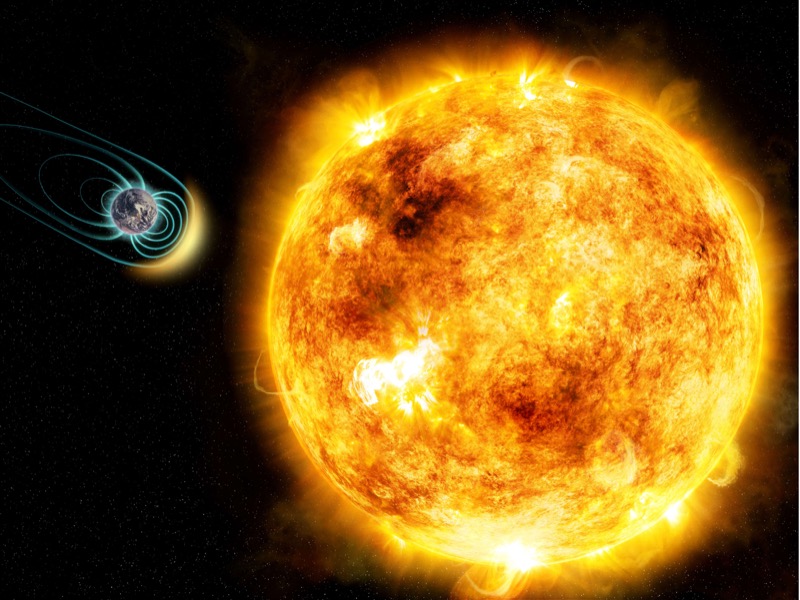There’s Life On Earth But Not On Mars – Here’s One Reason Why
Posted on: 16 March 2016
Earlier this week a joint Euro-Russian mission to Mars was launched in a bid to investigate whether there is any sign of life on the red planet. The inhospitably cold, desert landscapes of Mars are a result of the atmosphere having been eroded over time, which was caused by the lack of a protective magnetic field.
Now a new study involving researchers from Trinity College Dublin, in collaboration with the Harvard-Smithsonian Center for Astrophysics (CfA), shows how such a protective magnetic field was critical for life on early earth.
Astrophysicists are all the time looking to understand how life could develop on other planets and, in particular, on our own Earth. This research initially focused on finding a star that was similar to the sun – a younger, solar twin.
Kappa Ceti is such a ‘twin’, and by studying it the teams involved gleaned insights into the early history of our solar system. In particular, that this ‘twin’ of our own sun emitted violent winds.

To be habitable, a planet needs warmth, water and it needs to be sheltered from a young, violent sun. A fierce stellar wind emitted by such a young sun would erode the atmosphere of any planet if there was no magnetic field in place.
What this study proves is that earth, unlike Mars for example, had a strong magnetic field, which provided sufficient protection for life to be sustained on this planet in the early years.
Speaking on the research, Aline Vidotto from Trinity’s School of Physics, commented: “We found that Kappa Ceti, a proxy of the young sun, should host a wind that is about 50 times stronger than the present day solar wind. This would have led to a larger interaction via space weather disturbances between the wind of the young sun and the young Earth."
These findings are published today in The Astrophysical Journal Letters. Link to journal: http://arxiv.org/pdf/1603.03937v1.pdf
